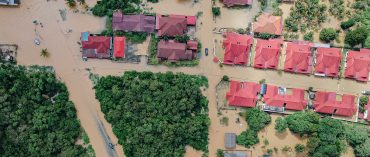Hazard Mitigation Plans
Local mitigation plans are investment strategies that communities develop throughout the planning process to identify hazards, assess risks and vulnerabilities, and develop mitigation strategies that can be funded using a wide range of resources. As stated in 44 CFR § 201.1(b), “the purpose of mitigation planning is for state, local and Indian tribal governments to identify the natural hazards that impact them, to identify actions and activities to reduce any losses from those hazards, and to establish a coordinated process to implement the plan, taking advantage of a wide range of resources.”
In addition, a locally adopted and FEMA-approved hazard mitigation plan is required for local governments to be eligible for the projects funded under the Hazard Mitigation Assistance (HMA) and other FEMA programs. Mitigation plans must be reviewed and updated every five years and formally adopted by each participating jurisdiction’s governing body as part of receiving approval.
WMSRDC has prepared numerous multi-jurisdictional hazard mitigation plans which have garnered praise from state and federal partners. WMSRDC hazard mitigation plans were featured in the Michigan State Police, Emergency Management and Homeland Security Division’s “Michigan Hazard Mitigation Success Stories” publication in 2011.
Community Wildfire Protection Plans
Community Wildfire Protection Plans (CWPP) are enabled by the federal Healthy Forests Restoration Act (HFRA), which provides communities with a tremendous opportunity to influence where and how federal agencies implement fuel reduction projects on federal lands. A Community Wildfire Protection Plan (CWPP) is the most effective way to take advantage of this opportunity. Additionally, communities with Community Wildfire Protection Plans in place will be given priority for funding of hazardous fuels reduction projects carried out under the auspices of the HFRA.
WMSRDC has worked with the counties of Mason and Oceana to develop CWPPs that meet the requirements of the HFRA, as well as the recommendations of the Michigan Department of Natural Resources. These documents capitalize on the information contained within each county’s hazard mitigation plan, and go into more depth to study and mitigate wildfire risk in the area.
Go to the WMSRDC Library page to access the CWPP Plans for Mason and Oceana counties under “Hazard Mitigation.”



